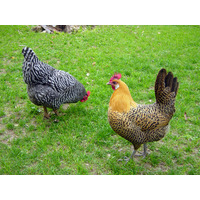Dosage

Diatomaceous earth is enriched with minerals and naturally occurring silica and provides a range of incredible benefits. At Diatomaceous Earth Online, we offer food, animal and pest grade DE of high quality. If you are looking for diatomaceous earth dosage, the following guide can help you get an idea about the recommended quantities.
HOW MUCH DO I NEED TO USE?
Around the Home
Outside areas – approx 250g – 500g per 100 square metres (dry powder)
As a liquid spray – approx 250g per 4 litres water
Lightly sprinkle in carpets
For more information visit www.usesfordiatomaceousearth.com
Diatomaceous Earth Dosage for Livestock and Pets
Feed rates for livestock and domestic pets vary due to the differences in farm practices and animal size. Suggested feed rates are as follows:
|
Animal |
Initial Rate |
Ongoing |
Dairy and Beef Cattle |
5% of dry feed per day for 90days (300g) |
2% of dry feed per day (130g) |
Goats, sheep, pigs |
10% of dry feed per day for 90 days |
5% of dry feed or grain per day |
Horses, Donkeys |
½ to 1 cup in feed per day |
2% per day |
Chickens, Ducks |
15% of dry feed per day |
5-15% per day |
Large dogs (>50kg) |
1-2 heaped tablespoons per day |
|
Large dogs (>35kg) |
1 tablespoon per day |
|
Medium dogs (15-35kg) |
½ - 1 tablespoon per day |
|
Small dogs (<15kg) |
1 teaspoon per day |
|
Puppies |
½ to 1 teaspoon per day |
|
Cats |
1 teaspoon per day |
|
Kittens |
½ teaspoon per day |
|
